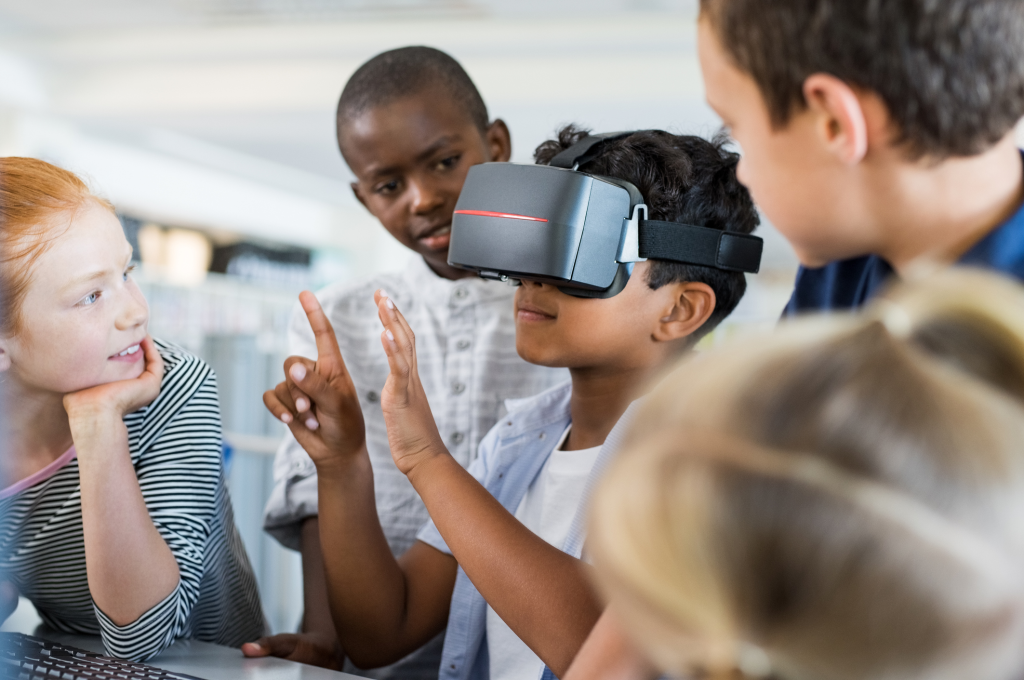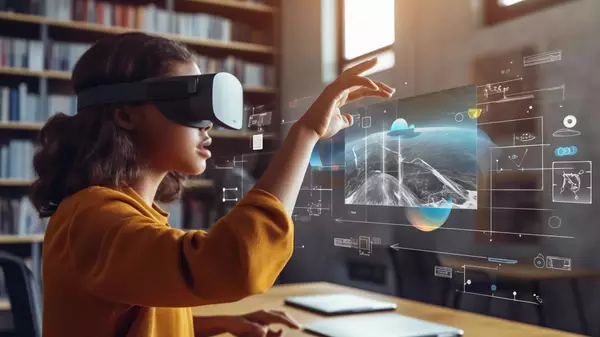Virtual reality offers engaging and interactive experiences that capture students’ attention and improve their learning, and it has the potential to completely transform education. Imagine a classroom where students wear virtual reality headsets and are suddenly thrust into space, the ocean’s depths, or historical sites. This is what a group of high school students went through as they took a virtual tour of ancient Rome for their history class. They could see historical events and engage with virtual replicas of old artifacts as they walked around the streets of the ancient city. The students were not just learning about history; they were living it.

Virtual reality offers hands-on learning, which allows students to get real-world experience in a secure setting. Learning becomes more captivating and memorable when interaction is fostered. Moreover, virtual reality’s inclusivity guarantees that every student, irrespective of their learning style or geographic location, can enjoy top-notch educational experiences.
Virtual reality also helps students collaborate and communicate with one another, which equips them with the needs of today’s job market. Virtual reality (VR) makes abstract concepts more tangible and understandable by mimicking actual scenarios and environments. With the use of this immersive technology, learning experiences might be tailored to each student’s requirements and preferences, improving learning results for a variety of learners.
The potential of virtual reality (VR) to create a stimulating learning environment is one of its main educational benefits. Students’ attention is captured by this thrilling experience, which also increases their involvement with what is being taught. Virtual reality (VR) can take pupils to locations they could not otherwise have access to, such as historical sites, space, or the human body, by recreating realistic scenarios and environments. This increased level of involvement can result in better memory recall and a more thorough comprehension of difficult ideas.
Furthermore, VR technology could improve inclusivity and accessibility in education. By providing remote students with access to top-notch educational opportunities, it can dissolve geographical barriers. Additionally, because virtual reality offers configurable learning environments, it can accommodate students with disabilities and suit a variety of learning methods. All students benefit from this inclusivity, which also creates a more diverse and equitable learning environment.
Students can engage with the course material and one another in fresh and engaging ways in a virtual reality setting. Experiences with collaborative virtual reality (VR) facilitate group work, problem-solving in teams, and interactive dialogues, all of which enhance interpersonal and communication abilities. Because VR fosters collaboration, it prepares students for the needs of a highly interconnected and worldwide profession by simulating real-world settings.
Conclusively, virtual reality has a great deal of potential for use in education. VR has the potential to completely change the educational environment by increasing engagement, offering chances for experiential learning, fostering inclusion, collaboration, customisation, and overcoming the drawbacks of traditional teaching approaches. With the advancement of technology, incorporating it into educational environments has the potential to produce learning experiences that are more impactful, effective, and engaging for students worldwide.

